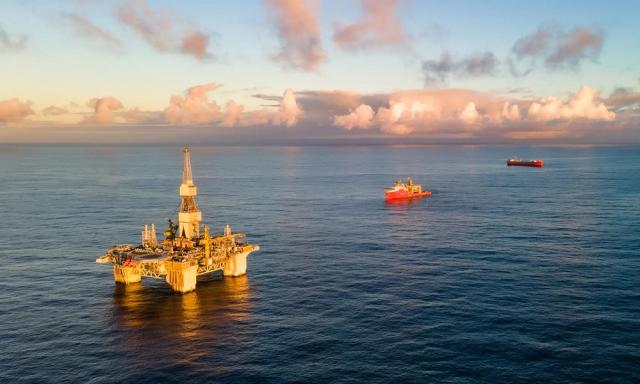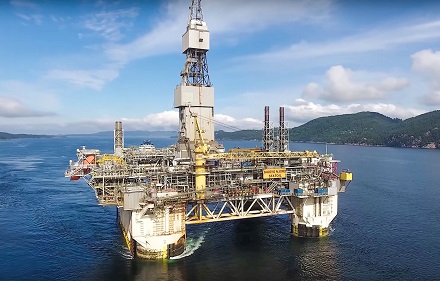
The Njord Field in the Norwegian Sea has resumed production after extensive upgrades to the platform and FSO. (Source: Even Fløgstad / Equinor)
After a six-year hiatus, the Njord Field in the Norwegian Sea resumed production on Dec. 27.
Upgrades of the platform and FSO serving the Equinor-operated Njord Field are complete and the field is back onstream.
“I could not have asked for better news to close out the year than the Njord gas field restarting production,” said Dawn Summers, the COO for Wintershall Dea, a partner in the Njord Field.
Aker Solutions carried out much of the platform engineering and upgrades, while Brevik Engineering handled the engineering work for the Njord Bravo FSO and Aible the FSO upgrades.
The Njord Field in 330 m water depth was discovered in 1986, began producing oil in 1997, with gas exports starting in 2007. The projected field life was through 2013, but large volumes remaining in the ground and nearby discoveries like Hyme, which was tied back to Njord, kept the field producing longer.

“This is the first time a platform and FSO have been disconnected from the field, upgraded, and towed back, and we have now doubled the field’s life. It has been a big and challenging job, partly performed during a pandemic,” Geir Tungesvik, Equinor's executive vice president for Projects, Drilling & Procurement, said. “The Njord Field will now deliver important volumes to the market for another two decades."
The oil is transported by pipeline to the Njord Bravo FSO and onwards by tankers to the market, while gas from the field is exported through a 40-km pipeline connected to the Åsgard transportation system, and from there to the Kårstø terminal.
Njord Field keeps delivering
The platform and FSO were brought ashore in 2016 after 19 years of production. In 2017 and 2018, upgrading contracts were awarded for the two installations. The Njord A platform was upgraded at Stord, where it was constructed in the 90s. The Njord Bravo FSO was inspected prior to upgrade and prepared for tow-out in Kristiansund, whereas the refurbishment was carried out in Haugesund.
According to Equinor, production from the Njord Field was initially slated to resume in 2020, but the upgrade project was more challenging than expected. The project was hard hit by the COVID-19 pandemic, which also put an upward pressure on costs. Originally, the project was expected to cost NOK 17 billion (US$1.7 billion), but it topped out at over NOK 31 billion (US$3.16 billion). Even so, Equinor said, the project remains profitable even if prices drop “far lower” than current rates.
Equinor and its partners plan to drill 10 new wells at Njord from an upgraded drilling facility. New discoveries have been made at the outer edges of Njord, and more exploration will be carried out in the surrounding area.
“The return of the Njord Field will unlock potential for exploration in the surrounding waters, as well as a hub for tie-back fields already discovered,” said Michael Zechner, managing director of Wintershall Dea Norge.
The platform and FSO upgrades made the facilities ready to receive production from two new subsea fields, the Equinor-operated Bauge and Neptune Energy-operated Fenja, which together hold recoverable resources of about 110 MMboe. According to Neptune, the Fenja Field will begin production in 2023.
“Our ambition is to produce about the same volume from Njord and Hyme as we have produced so far, more than 250 million barrels of oil equivalent," Kjetil Hove, Equinor's executive vice president for Exploration & Production Norway, said.
Earlier this month, Equinor announced plans to partially electrify the Njord Field with power from shore via the Draugen platform.
Equinor operates the field with 27.5% interest on behalf of partners Wintershall Dea Norge AS with 50% and Neptune Energy Norge AS with 22.5%.

